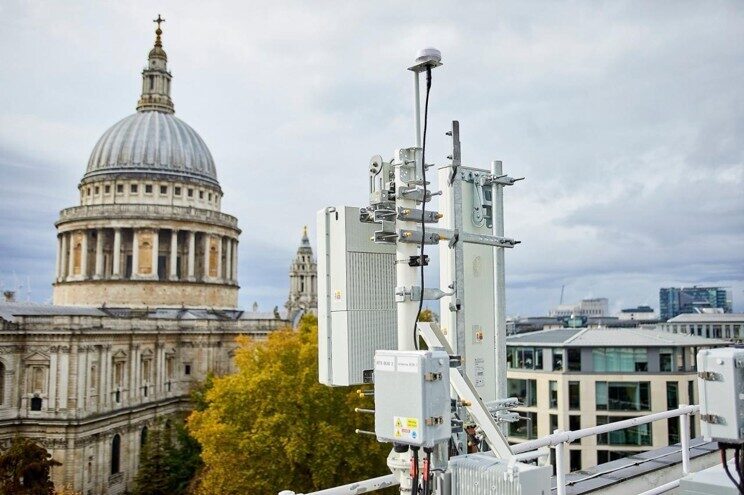The UK is racing to deliver the next generation of connectivity, but the journey isn’t straightforward. While demand for 5G coverage continues to soar, the infrastructure required to make it a reality is facing significant challenges.
One of the biggest stumbling blocks isn’t technical. It’s contractual. Across the country, mobile network operators (MNOs) are struggling to secure access to prime rooftop sites, with many landlords serving notice to quit or refusing to renew agreements altogether.
At the centre of this growing tension is the 2017 update to the Electronic Communications Code (ECC). Designed to accelerate network rollout, the reforms allowed operators to pay significantly lower rents for rooftop and land-based installations, in some cases, cutting payments by as much as 90%.
For landlords, this sudden shift has fundamentally changed the economics of hosting telecoms equipment. For MNOs, it has created uncertainty and delay at a time when network densification has never been more urgent.
THE ROOFTOP RENTAL ROW
Before the ECC reforms, landlords could negotiate market-rate rents for allowing operators to install antennas and base stations on their rooftops. These agreements created a steady and often lucrative source of income for property owners while giving operators valuable height and coverage.
But when the reforms came into effect, rental valuations were tied instead to a “compulsory purchase” model, bringing many payments down to a fraction of their previous value. What had once been commercially attractive quickly became far less so.
It’s no surprise, then, that landlords are increasingly reluctant to renew agreements. Many are serving notice at the end of contracts, forcing operators to seek alternative solutions at the exact moment they need more sites than ever.
For MNOs, the consequences are significant. 5G networks depend on density, far more antennas and access points are needed than previous generations to deliver high-speed, low-latency coverage. Losing access to valuable rooftop positions slows deployment, increases rollout costs, and creates the potential for patchy service in urban areas where demand is highest.
At the same time, the retirement of 2G and 3G networks is adding extra pressure. Operators need reliable new locations to support expanding 4G and 5G traffic, while also preparing for next-generation services that will underpin AI, IoT, autonomous vehicles, and connected cities.
The challenge is clear: both landlords and MNOs are caught in a deadlock, and unless a new approach is found, the UK risks falling further behind.
THE NEED FOR SMARTER INFRASTRUCTURE
The UK is already lagging in 5G performance. Ranked 22nd out of 25 European countries in data speeds, some of our busiest towns and cities are experiencing communications dead spots, caused not by a lack of demand, but by the difficulty of rolling out new infrastructure quickly enough.
Part of the problem is densification. To deliver the promise of 5G, faster speeds, lower latency, and greater capacity, operators need more cell sites, closer together. But securing suitable locations is becoming harder, not easier.
Planning constraints, community resistance, and the breakdown in rooftop agreements have all combined to create a bottleneck. Without intervention, the UK risks losing its competitive edge in enabling the digital economy.
CONNECTED URBAN: A STREET-LEVEL SOLUTION
Instead of relying solely on contested rooftop agreements, operators are increasingly turning to street-level infrastructure to deliver the connectivity needed.
This is where Connected Urban from CU Phosco offers an innovative alternative. Designed as a multi-service smart pole and communications hub, Connected Urban brings together lighting, antennas, CCTV, IoT sensors, and other smart city applications into one small, discreet footprint.
Standing 15 to 20 metres tall, Connected Urban can deliver rooftop-level coverage while supporting up to seven frequency bands, enabling both macro and small-cell communications from a single installation.
By consolidating multiple technologies into one structure, Connected Urban reduces street clutter, simplifies planning approvals, and accelerates rollout, making it attractive for operators, landlords, and local authorities alike.
A WIN-WIN FOR LANDLORDS AND MNOs
Connected Urban doesn’t just solve a technical challenge. It creates a commercial opportunity.
For landlords and asset owners, the model opens up new revenue streams. By working with mobile network operators to deploy street-level connectivity, property owners can replace lost rooftop income while supporting smarter, more connected communities.
For MNOs, it offers a scalable, future-proof way to accelerate network rollout without becoming locked in protracted disputes. Deploying infrastructure at street level bypasses rooftop negotiations, avoids planning delays, and provides the coverage density required to meet growing demand.
For local authorities, Connected Urban’s integrated design tackles another common challenge: visual impact. Instead of adding more poles, cabinets, and clutter, operators can deliver multiple services from a single, sympathetic structure, blending connectivity, lighting, and smart city functions into one.
LOOKING AHEAD
With demand for seamless connectivity rising, the UK cannot afford to let outdated rental disputes hold back progress. 5G will underpin the technologies that shape our cities and economies for decades to come, from AI and automation to connected vehicles and intelligent energy networks.
Connected Urban provides a practical, commercially viable way forward. By enabling landlords, operators, and local authorities to work together, it helps break the deadlock that’s slowing deployment and unlocks the potential of faster, more resilient networks.
Whether you’re a landlord looking to maximise the value of your assets or an MNO seeking a more efficient way to densify your network, Connected Urban is designed to help you move faster, without the rooftop friction.
READY TO EXPLORE A SMARTER APPROACH TO 5G DEPLOYMENT?
Let’s start the conversation today.
